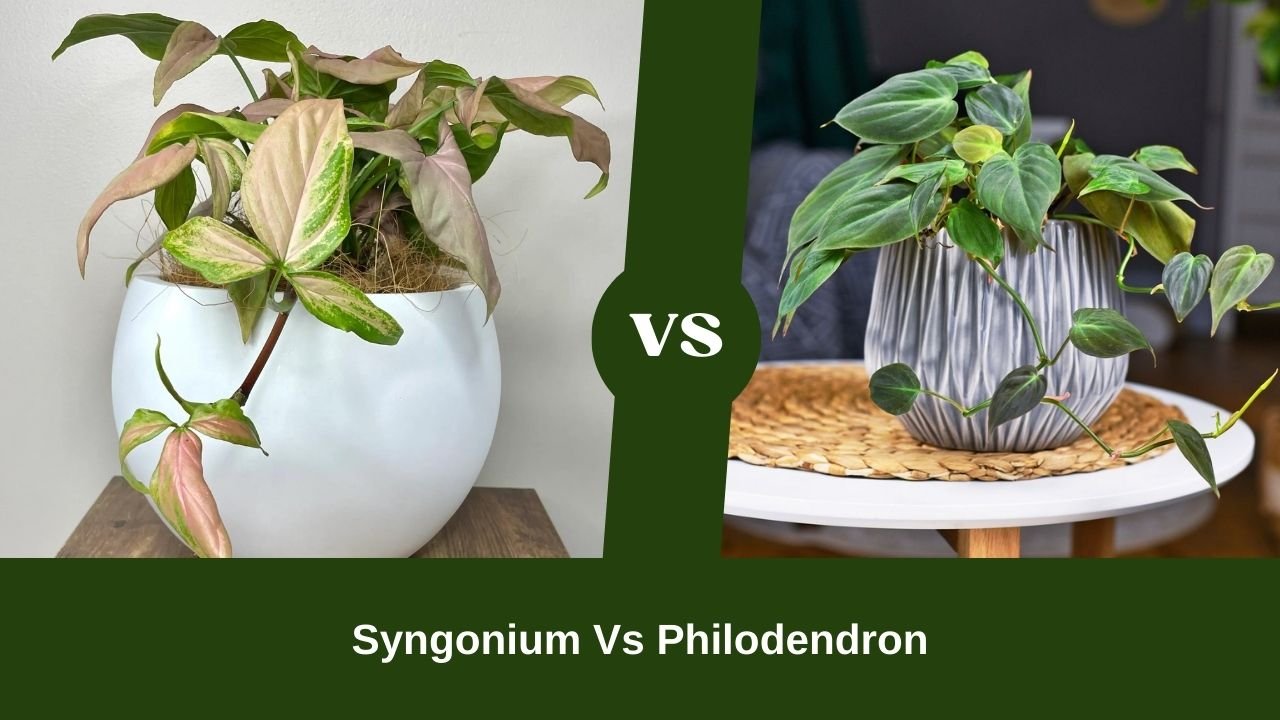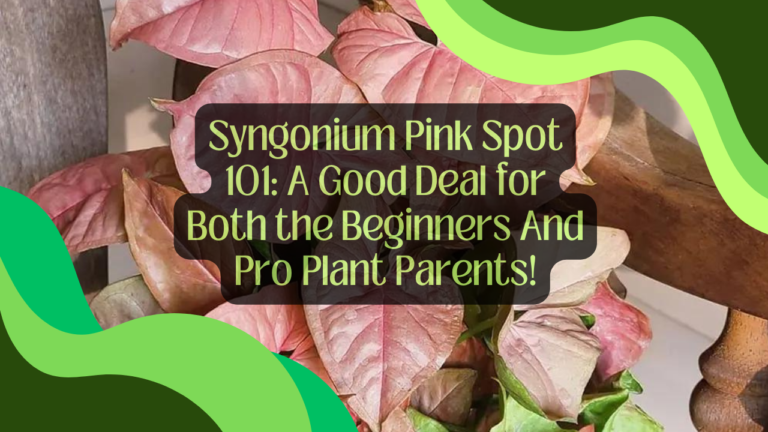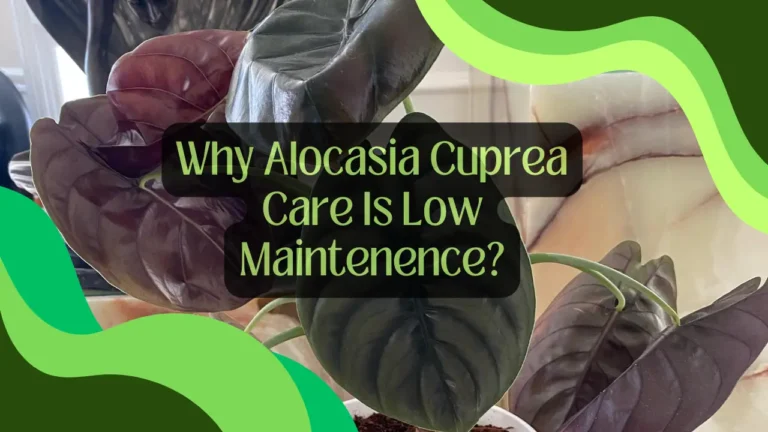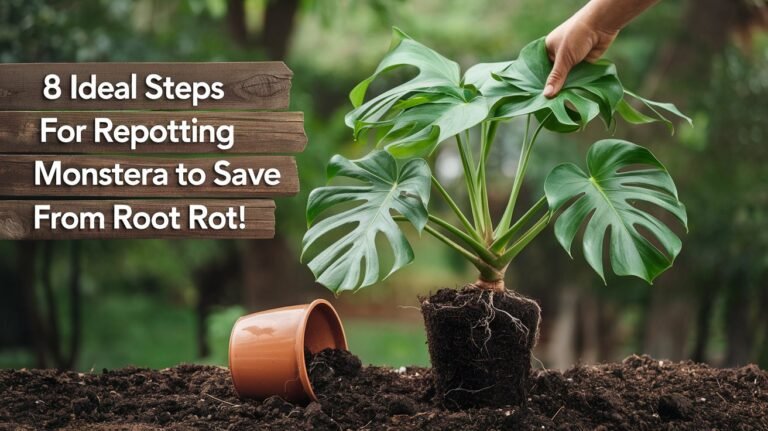Syngonium Vs Philodendron – Philodendron Wins By An Edge Maybe?

Despite having a long history of survival, Philodendron is often compared to Syngonium, a new genre of indoor plant comparatively. Both have their unique characteristics, appearance, and other distinctions.
So, who to pick in a Syngonium vs Philodendron debate? Syngonium has heart-shaped leaves and often stays compact. Philodendron features lance-shaped leaves and tends to climb, with diverse species and patterns. In addition, if you love flowers, philodendrons might feel sorry for their infrequent flower, while Syngonium says hi!
This will be quite an interesting debate. let’s get in as I’m gonna talk about a lot of things here and try to find a suitable verdict for you. Let’s start!
Table of Contents

Syngonium vs Philodendron – Common Differences
There are some points where Syngonium and Philodendron are different from one another but these things are not something that can cause headaches to gardeners. Here I make a table of these things in short. Before going to a detailed discussion, you must read this table carefully.
| Criteria | Syngonium | Philodendron |
| Common Name | Arrowhead plant | Tree philodendron |
| Scientific Name | Syngonium podophyllum | Philodendron |
| Family | Araceae | Araceae |
| Type | Arrowhead Vine | non-climbing varieties and vining |
The Aesthetic Contrast Between Syngonium And Philodendron
Both plants have their different appeal in terms of looking. And the plants are different looking when comparing between them. Take a look at the table first.
| Criteria | Syngonium | Philodendron |
| Size | 3–6 ft. tall, 1–2 ft. wide | 1–3 ft. tall, 1–6 ft. wide |
| Leaves | Heart-shaped, green with pink or white variegation | Lance-shaped, bright green |
| Flower | Small, white flowers | Insignificant flowers |
| Root | Fleshy, tuberous roots | Thick, fibrous roots |
| Stems and Bark | Smooth, green stems | Smooth, green stems |
| Growth Habit | about 12 inches every year | up to 4 inches a week during the spring and summer growing seasons |

Size Differences
The height of Syngonium ranges from 3 feet to 6 feet. On average the size is found 4.9 feet. They have a width around 1–2 feet. On the other hand, Philodendron can vary a bit more, with heights ranging from 1 to 3 feet and an impressive width range of 1 to 6 feet. I think you know which one will be good for you in case of height.
Read More About Syngonium Pink Allusion Vs Neon Robusta
Leaves Size, Shape, And Color
Leaves are a vital part of indoor plants that contribute to their beauty. Both Syngonium and Philodendron have amazing leaves. Syngonium has heart-shaped foliage that boasts a charming blend of green hues infused with delicate pink or white variegation.
In contrast, Philodendron’s leaves are Lance-shaped. Their color is bright green. Based on the species of these two plants, leaf size and color may vary. Keep this in mind.
Flowers Of Both Syngonium And Philodendron
Araceae are known for their leaves, not flowers. Even some Araceae don’t have any flowers. Syngonium majesty is in its white flowers which is a kind of rare, just like the Syngonium Aurea (A rare houseplant as well). In comparison, Philodendron’s flowers are also rare. Its color is velvet. Look at the image below to get an idea of how they will look at your home.
Growth Habit
It’s not a part of appearances but it changes appearance. That’s why I think to give it a place here. Syngonium takes a steady approach, increasing its size by about 12 inches each year. Philodendron’s growth rate is impressive, it can shoot up by up to 4 inches per week during the lively spring and summer growing seasons.
Does Caring for Syngonium vs Philodendron Requires Different Attention?
First of all, the answer is no. Caring for both plants is quite a similar job. So, you don’t need to worry. Let’s take a look at the table below and be clear about whether or not they’re different from each other.
| Criteria | Syngonium | Philodendron |
| Light Requirements | Medium to bright indirect light for at least 6 hours each day | Bright indirect sunlight for 4-6 hours daily |
| Watering Needs | Water regularly, allowing the soil to dry out slightly between waterings | Water regularly, allowing the soil to dry out slightly between waterings |
| Soil Type and pH | slightly acidic soil with a pH level between 5.5 and 6.5 | Slightly acidic soil and PH 5.0 and 6.0 |
| Temperature and Humidity | The Syngonium prefers 16°C – 27°C temperatures and high humidity. | Most Philodendrons like high humidity levels, around 60-70% and temperatures below 55 degrees Fahrenheit |
| Fertilization | fertilize the Syngonium every two weeks | Fertilize monthly during the growing season with a balanced fertilizer |
| Pruning and Maintenance | Prune to remove dead or damaged leaves | Prune to remove dead or damaged leaves |
| Pest and Disease Susceptibility | Susceptible to mealybugs, spider mites, and aphids | Susceptible to mealybugs, spider mites, and aphids |
| Propagation Methods | cuttings placed in water or directly into compost | Choose a few healthy stems with several leaves on the mother plant |
| Seasonal Considerations | No special seasonal considerations | No special seasonal considerations |
| Support and Trellising | vines up a moss pole, trellis, or some other support | For support Zella planks work great |
I guess, you’ve already found out that the care is almost similar for both plants. They are quite a carbon copy in terms of
- Light requirements
- Watering frequency
- Soil type and pH
- Seasonal consideration
- In fact, pests and disease
When it comes to temperature and humidity, Syngonium prefers a cozy range of 16°C to 27°C with high humidity. On top of that, Syngonium lance leaf requires frequent watering. Philodendron likes it cooler, with humidity around 60-70% and temperatures below 55 degrees Fahrenheit.
Feeding time varies slightly – Syngonium enjoys bi-weekly fertilization, while Philodendron is content with a monthly dose during its growing season.
For vertical charm, both plants climb, but Syngonium elegantly ascends moss poles, trellises, or any supportive structure. But Philodendron gives a nod to Zella planks for added assistance.
2 Unique Distinctions of Syngonium And Philodendron
There are some additional things you should know about both plants. This can be interesting and unique. Let’s take a look
- Philodendrons are the older wiser plants – with over 60 varieties and a potential lifespan of over 30 years, they’ve been around the block a few times! Meanwhile, syngoniums are the new kid on the block – with only 23 varieties so far and sticking around for a decade or so.
- When it comes to toxicity, both plants pack a punch and can cause some ouchies if ingested. Philodendrons have itty bitty toxic crystals that make them a no-no for pets and people. Syngoniums ooze a sticky sap that can irritate skin – so handle with care, my friend!
Let’s Try to Find a Suitable Match
Almost everything is discussed above to make a decision. But if you still want some more things, then here is my opinion.
Choose Syngonium If You
- Prefer Variegated Foliage
- Have Moderate Light Conditions
- Enjoy a Compact Growth Habit
- Can Provide High Humidity
Choose Philodendron If
- Prefer Bold, Lush Greenery
- Have Bright, Indirect Sunlight
- Want Faster Growth
- Can Maintain Moderate Humidity
My personal opinion if you ask for it, might go a little towards the Philodendron. It grows fast and has flowers (though insignificant) which you must love whether you’re a pro in raising plants, or not. In addition, fertilization isn’t a regular thing, unlike Syngonium. If you’re a plant lover, but lazy, Philodendron might be a wonderful pick.
Sums Up
At the end of the day, both add a touch of the tropics as houseplants. But philodendrons have more variety and experience on their side – making them the venerable elders of the plant world. While syngoniums provide a fresh, youthful energy with their bright variegated leaves. Whichever you choose, just be sure to keep them away from curious pets and kids!
That was all for today about Syngonium vs Philodendron. Hoping for some good planting experience for you. Thanks for reading from my blog.






